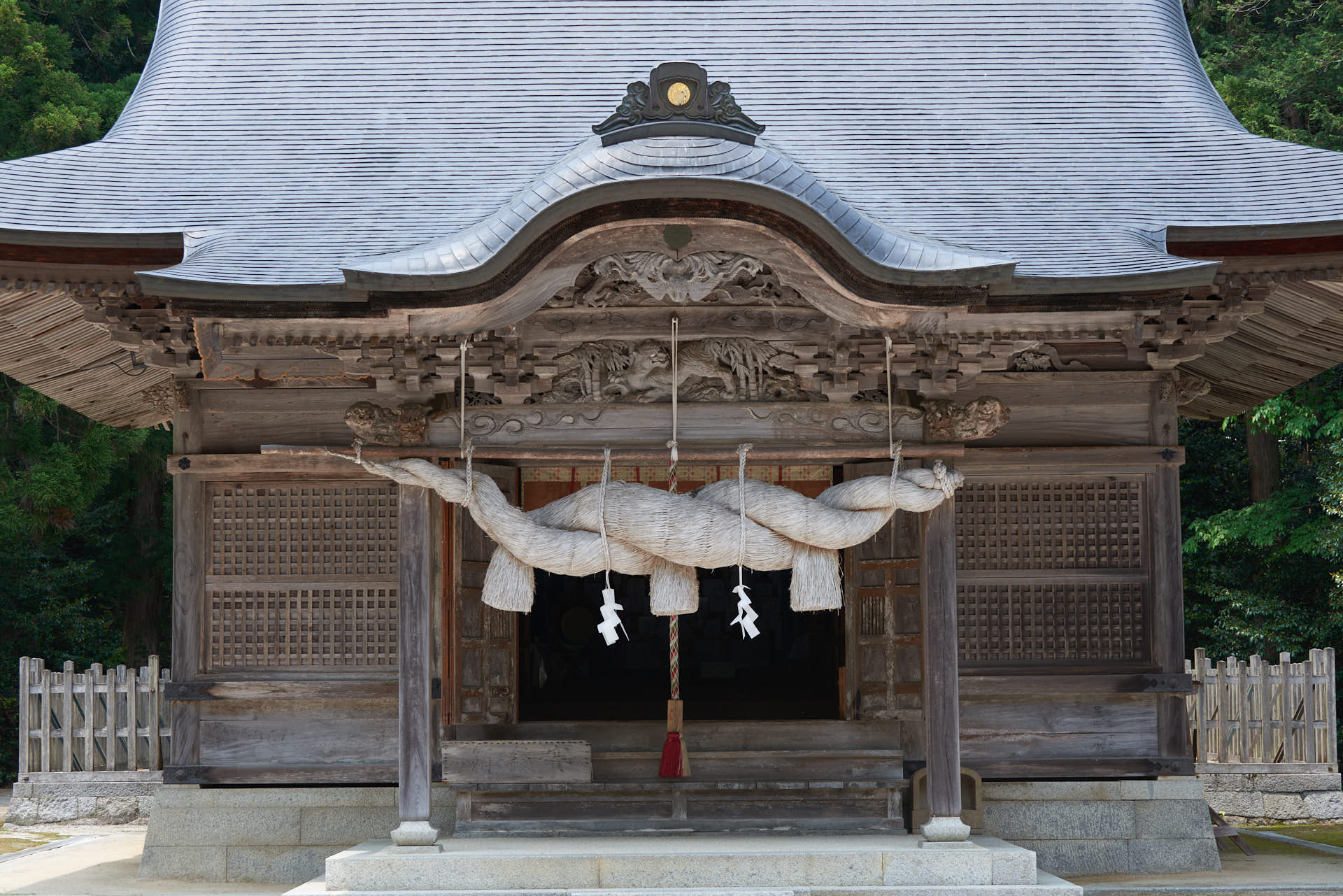The Arrival of Iron
Prayer for the God of Kanayago

Prayer for the God of Kanayago
The Kanayago Shrine and Devotion
Tatara, a historical ironmaking method in Japan, depended on a variety of natural resources such as iron sand, charcoal, and soil, as well as the elements of water, wind, and fire. Given this, it is easy to see how it called for prayer in awe of something beyond the human realm.
Over 1200 Shinto shrines are dedicated to Kanayago, the god of iron. The head of these is the Kanayago Shrine in Shimane Prefecture, nestled in a sacred forest, with a stone gate and pathway leading up to its majestic, zelkova wood worship building. While it is a beloved local landmark, it draws devout believers throughout the country, especially among blacksmiths, foundry workers, metallurgists, and iron manufacturers.
Workers at Nittoho Tatara, the only traditional ironmaking factory rebuilt and operating today, also keep religious practices. They celebrate the completion of their annual operation at a small altar inside their workshop, and every spring and autumn, the worshipers walk barefoot more than 10 km to attend a ritual at the Kanayago Shrine.
Legends of Kanayago
Several fascinating myths belong to Kanayago. One record dating to the 18th century, the Edo period, has it that the god on the back of a white heron once descended onto a katsura tree in Izumo, present-day Shimane, initiating the Abe family into ironmaking. The family has been a leader in the industry and the shrine’s priest ever since.
Kanayago is said to be a jealous goddess who doesn’t favor women. However, Keiji Abe, the family’s descendant and priest, shows an alternative view. He explains, “The deity enshrined here is actually a pair of male and female gods. In another tradition, these deities are considered Kanayago’s parents, with the mother born to a sea dragon princess and the god of mountains.”
Life and Death in the Cycle
Once, when Tatara manufacturers prayed for help with an ironmaking problem, they had a divine revelation. Under the guidance, they leaned an animal’s dead body on the pillar of the furnace building, and the quality of iron improved drastically. The priest concludes,
In Kanayago’s beliefs, death is not considered impure but rather a process of reincarnation.
This belief in Tatara aligns with the five-elements philosophy, which originated in ancient China and had a great influence on Japanese culture. It suggests mutual relationships among the five elements: wood, fire, soil, metal, and water, each giving rise to the next. Most importantly, such circular transition is observed in life, where all beings are born, grow, wither, disappear, and are reborn. Kanayago’s beliefs echo the continuous cycle of creation and rebirth.



